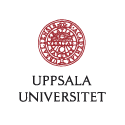
Press release -
Uppsala engaged in research to reduce the radioactivity of nuclear waste
Uppsala University is contributing an important piece to the puzzle of substantially shortening the radioactive life of nuclear waste. Belgian scientists aiming to create a facility to convert long-lived radioactive fuel waste into shorter-lived waste are now enlisting the help of the FREIA Laboratory in Uppsala.
The FREIA Laboratory at Uppsala University has entered into an agreement with the Belgian Nuclear Research Institute under which FREIA will test equipment for the particle accelerator in Belgium. As a first step, the Belgian researchers aim to create a facility that will be used to demonstrate how spent nuclear fuel can be converted from long-lived to short-lived.
“Long-lived can mean 300,000 years. This refers to the time from when the fuel is spent until the radiation level from it has fallen to the background level,” explains Maja Olvegård, Director of the FREIA Laboratory and a researcher in accelerator physics. “Using a process known as transmutation, the volume of waste can be reduced by up to 100 times. As a result, the background level will be reached after about 300 years.”
The facility in Belgium is called MYRRHA and will be one of the world’s first multifunctional research reactors powered by a particle accelerator. The aim, then, is to be able to convert long-lived nuclear waste into short-lived waste, which would completely transform the conditions for final disposal in Forsmark, for example.
“This conversion does not make long-term storage such as the repository in Forsmark redundant, but it lowers the risks associated with storage by reducing the amount of radioactive material, especially really long-lived variants,” Olvegård says.
In addition, the particle accelerator acts as an on-off switch, which means that a meltdown cannot occur in such a reactor.
Olvegård’s team of around 20 people is now preparing for the first delivery, due during the summer. They have been entrusted with this task because they have spent ten years accumulating skills and experience by building a test facility where similar tests have been made for another accelerator. The facility includes a container in which the equipment is cooled to -271 degrees, making it superconducting. It can then accommodate strong electromagnetic fields that are used to speed up particles in the accelerator without energy loss. The equipment will be tested in various steps to ensure that everything works as intended before being sent on.
“There are only a handful of laboratories in Europe that can do this kind of work. We are the only one in Sweden. This is both a stamp of approval on work already done, and means we can continue to contribute to accelerator-based research facilities,” says Olvegård.
Topics
Founded in 1477, Uppsala University is the oldest university in Sweden. With more than 50,000 students and 7,500 employees in Uppsala and Visby, we are a broad university with research in social sciences, humanities, technology, natural sciences, medicine and pharmacology. Our mission is to conduct education and research of the highest quality and relevance to society on a long-term basis. Uppsala University is regularly ranked among the world’s top universities. www.uu.se
